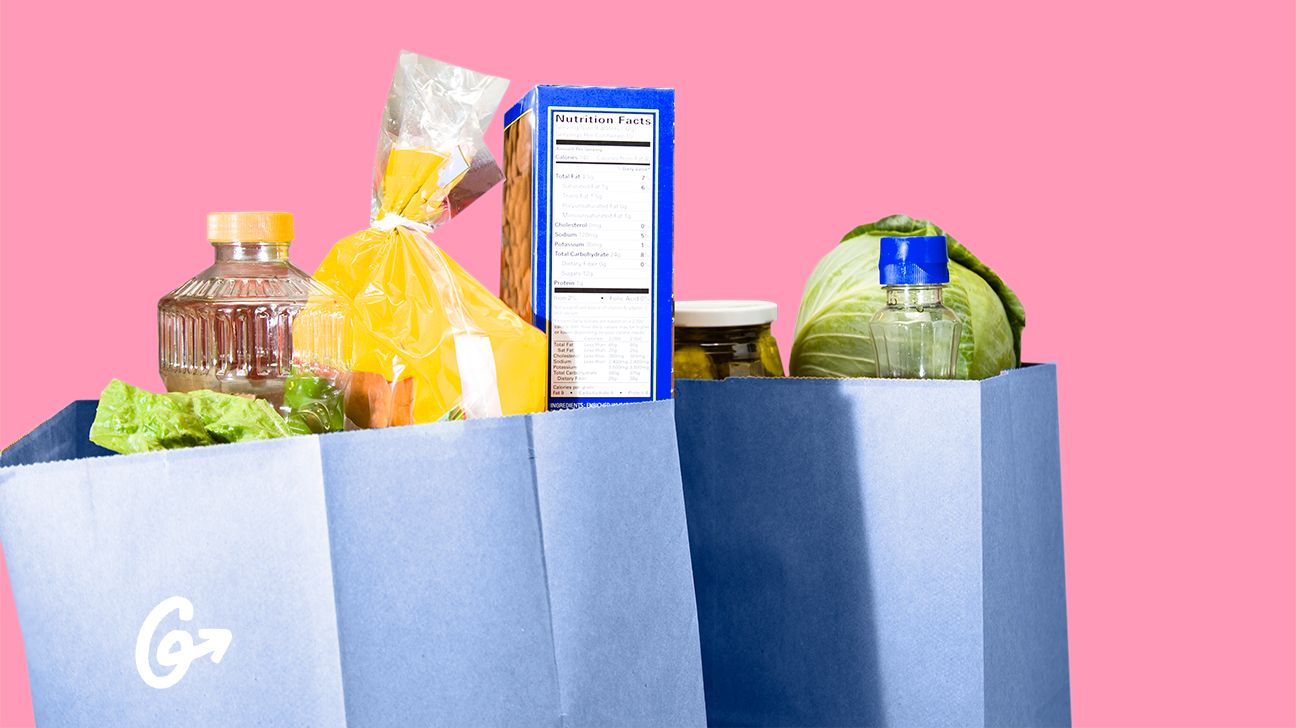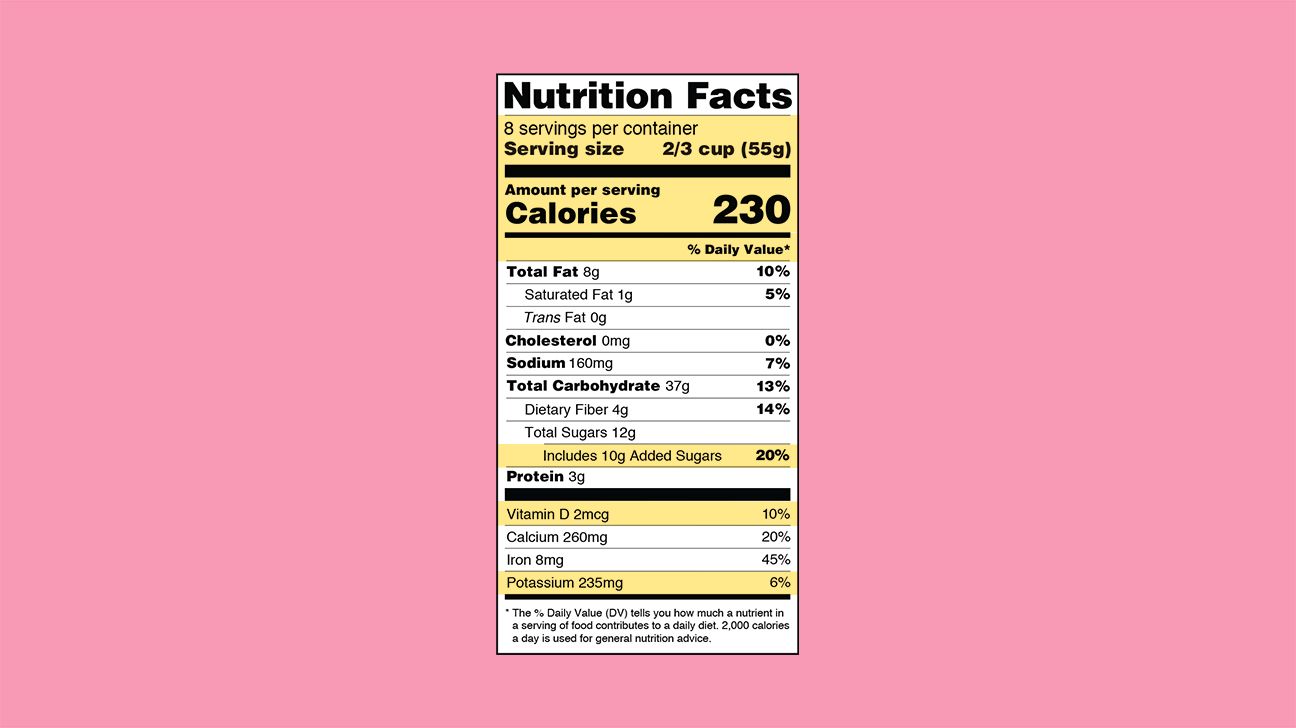One of the easiest ways to know what’s *actually* in your favorite store-bought foods — the heat-and-eat tamales, instant udon, or that strawberry granola you can’t live without — is to check out the nutrition facts label located on the back of the package.

If you’re a regular label looker, you may have noticed it now seems a bit different — and that’s because it recently got a much-needed makeover. The nutrition facts label hadn’t had a major update in 20 years, and yeah, a lot’s changed in the last 2 decades.
A few essential changes were needed to make it more current and useful when it comes to decoding what’s in the stuff that you’re putting in your bod.
Let’s take a closer look at the brand spankin’ new FDA nutrition facts label and why these long overdue changes are good news.
Food for thought…
The U.S. Food and Drug Administration, the federal agency in charge of food safety and protecting public health, determines what goes on the label.
The agency decided to make changes based on new nutrition research findings and feedback from health professionals and consumers.
In a nutshell, the new and improved nutrition facts label makes it easier for you to recognize and understand the basics about the food products you buy.
Some info on the new label is highlighted while other parts were changed or added, making it harder for food companies to be shady AF when it comes to the serving sizes and ingredients used in their products.
If you’ve ever wondered, “Seriously, who decided a measly half-cup of ice cream is a serving?” you’re not alone.
Serving sizes are based on the amount of food people typically consume, not how much they should consume. In other words: You should not use a serving size as a guideline of how much to eat.
We know, it’s confusing.
Here’s the thing — the FDA realized they were underestimating how much of certain foods and beverages people usually consume. For those of us who typically eat more than a half-cup of double chocolate ice cream, this makes total sense.
To adjust, the FDA updated some serving sizes on the new label, including the serving size for soft drinks, to more accurately reflect what the average American consumes today.
Another change: The serving size font is larger and in bold so it’s harder to miss the portions contained in a particular food or drink. Keep in mind that most beverages and snack foods contain multiple servings, even ones sold in teeny packages or gulp-size bottles.
So, you may be guzzling 2 to 3 servings of soda or juice without even realizing it.
Perhaps the most loved (or hated?) part of the new nutrition label is — calories. On the old label, they were listed in plain text, making them easier to overlook when quickly scanning the back of a package.
On the new version, the calories are larger and in bold, making them stand out. This is a plus for anyone wanting to watch their intake especially from highly processed, calorie-dense foods.
Daily Values (DVs) help consumers figure out how much of a particular nutrient food contains in relation to the recommended daily intake.
The Daily Value percentage (%DV) lets you know whether a food or beverage is a good source of vitamins and minerals.
It also gives you an estimate of how much protein, total fat, total carbs, cholesterol, fiber, and sodium the food or drink will contribute to your total daily intake.
FYI, this percentage is based on a 2,000 calorie diet. The DVs for certain nutrients have changed, so the labels have been updated accordingly.
Total fat and the percentages of vitamins A and C have been removed from the updated nutrition facts label. This removal is based on findings from research studies suggesting that it’s the type of fat, not the amount, that really impacts health.
Vitamins A and C were removed from the label because deficiencies in these vitamins are rare in the U.S. But food companies can still list vitamins A and C on their nutrition labels if they choose.
One BIG change: It’s now required for products that contain added sugars to list the total amount of added sugar on the label. It’s about time!
Before this update, companies could lump all sugars — whether added or natural — under “Total Sugars.” This pretty much made it impossible to know how much added sugar was in a food.
This is one of the most welcome changes on the nutrition facts label since we’ve all become smarter about sugar.
We understand the difference between natural and added sugars and there’s plenty of research saying that consuming too much added sugar isn’t good for your health.
Now, you can see exactly how much added sugar is in your favorite breakfast cereal or flavored coffee drink, which TBH is probably a lot, so brace yourself!
When your morning snack of strawberry yogurt contains 13 grams (3.25 tsps) of added sugar and your daily matcha latte contains 19 grams (4.75 tsps), this can add up pretty quickly.
Sugar smarts
Wondering how to measure the sugar you see on a label? For reference, 4 grams of sugar equals 1 teaspoon.
The American Heart Association recommends that women limit added sugar to 6 teaspoons per day and men limit to 9 teaspoons per day.
In addition to added sugars, vitamin D and potassium are also required to be listed on the new nutrition facts label. Many Americans don’t get enough of these nutrients, which can harm health in a number of ways.
The new nutrition facts label has been updated with some really vital info for health-conscious consumers, including a call-out for added sugars, potassium, and vitamin D, along with new serving sizes and DVs.
Plus, calories and serving sizes are now printed in in-your-face bold text, so they’re harder to miss.
The changes are designed to empower consumers to be more informed and in charge of what they’re buying, eating, and drinking. Cheers!
Jillian Kubala is a registered dietitian based in Westhampton, NY. Jillian holds a master’s degree in nutrition from Stony Brook University School of Medicine as well as an undergraduate degree in nutrition science. She runs a private practice based on the east end of Long Island, NY, where she helps her clients achieve optimal wellness through nutritional and lifestyle changes.


